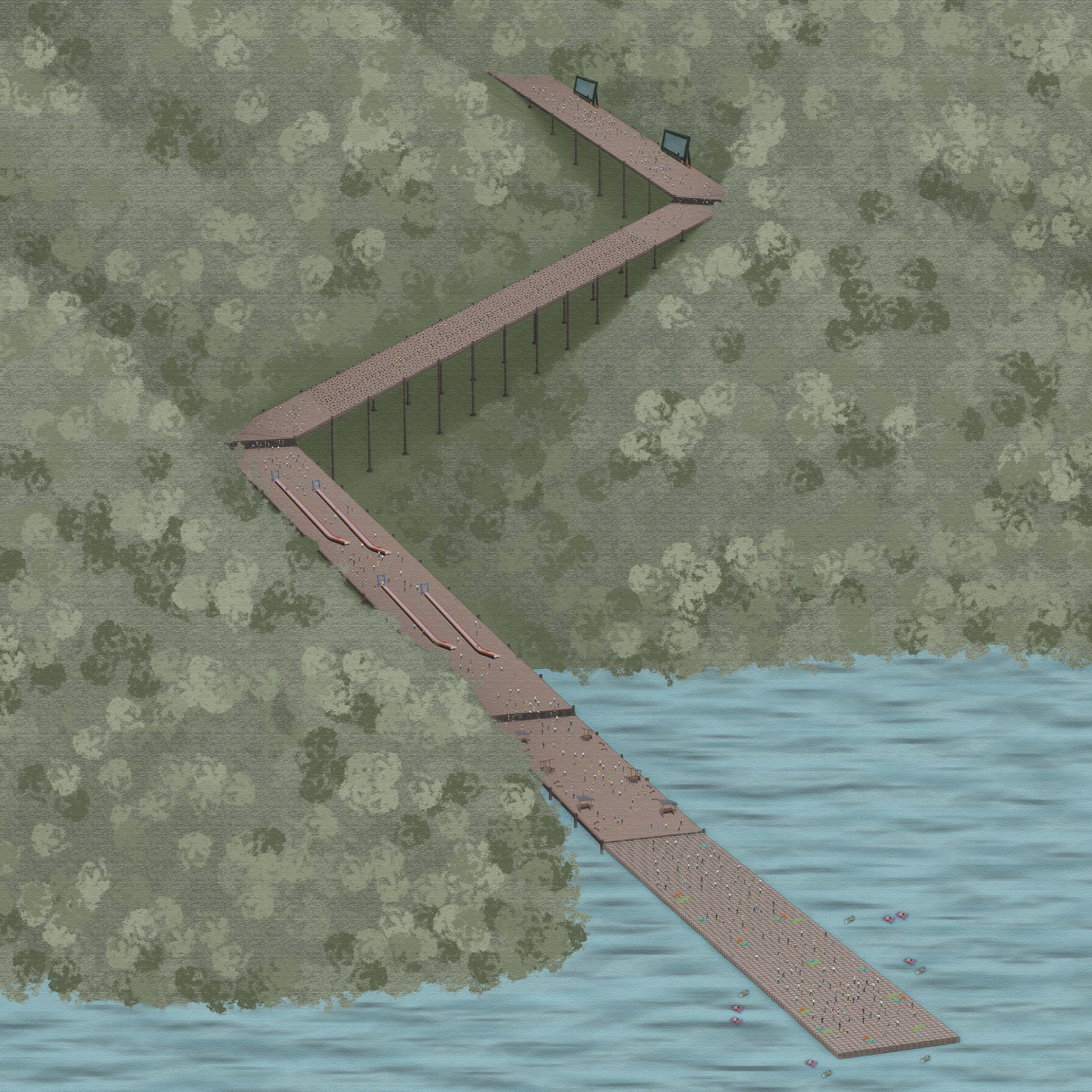The main purpose of the “Firehouse Experience” in the Cogswell Reservoir is to incorporate the general public into the activities that firefighters experience on a daily basis. This firehouse acts more as a learning and educational environment that is accessible to everyone, rather than just a base of operations and emergency service.




Before designing the “Firehouse Experience”, I designed a ramp that conformed to the steep surrounding landscape, allowing people to access the activities available on the platform that encouraged people to engage with their surroundings and with one another, fostering a sense of community and strengthening the bond between people and the environment.
The “Firehouse Experience” is designed with four separate volumes that are connected by a ramp that the general public, as well as the firefighters themselves, can access and participate in the events that take place. Like a children's playground, where there are multiple parts like the swing set and jungle gym, this firehouse is designed in a similar way, with the ramp acting as the pathway to these different “stops” that appear along the way.












Each volume in the “Firehouse Experience” caters to a specific program, each with a different materiality, design, and interaction with the site that is influenced by the program itself.
The training center is a large, sculpture-like form, made out of stainless steel, and interacting with the ground at the three points in which it stands. Firefighters are able to interact with the structure itself when participating in training exercises.


The living quarters are a more enclosed space, to allow for more privacy when relaxing, sleeping, and getting ready for the day. The solid, smooth form is made out of concrete and embedded into the ground to further emphasize the need for privacy during times of rest.
The decontamination space is a more transparent bubble, that is able to inflate in times of need, as well as deflate when not needed, which allows for more efficient cleansing operations when necessary, also emphasizing the fact that a decontamination space is temporary. With the idea of inflating and deflating when needed, the tent sits directly on top of the ground morphing into the texture of it, in order to not disturb the site itself.


The mechanical and radio command center is a design built on stilts, allowing for the user to see more of the reservoir from a higher elevation, in order to easily identify and locate wildfires. The structure takes a more traditional, serious approach to mimic the program it occupies.


The “Firehouse Experience” is a firehouse designed for everyone, not just firefighters, letting anyone and everyone learn and experience the work, training, and environment that comes with the job of being a firefighter, showing the importance of community engagement and the value of promoting awareness and understanding of wildfires.
